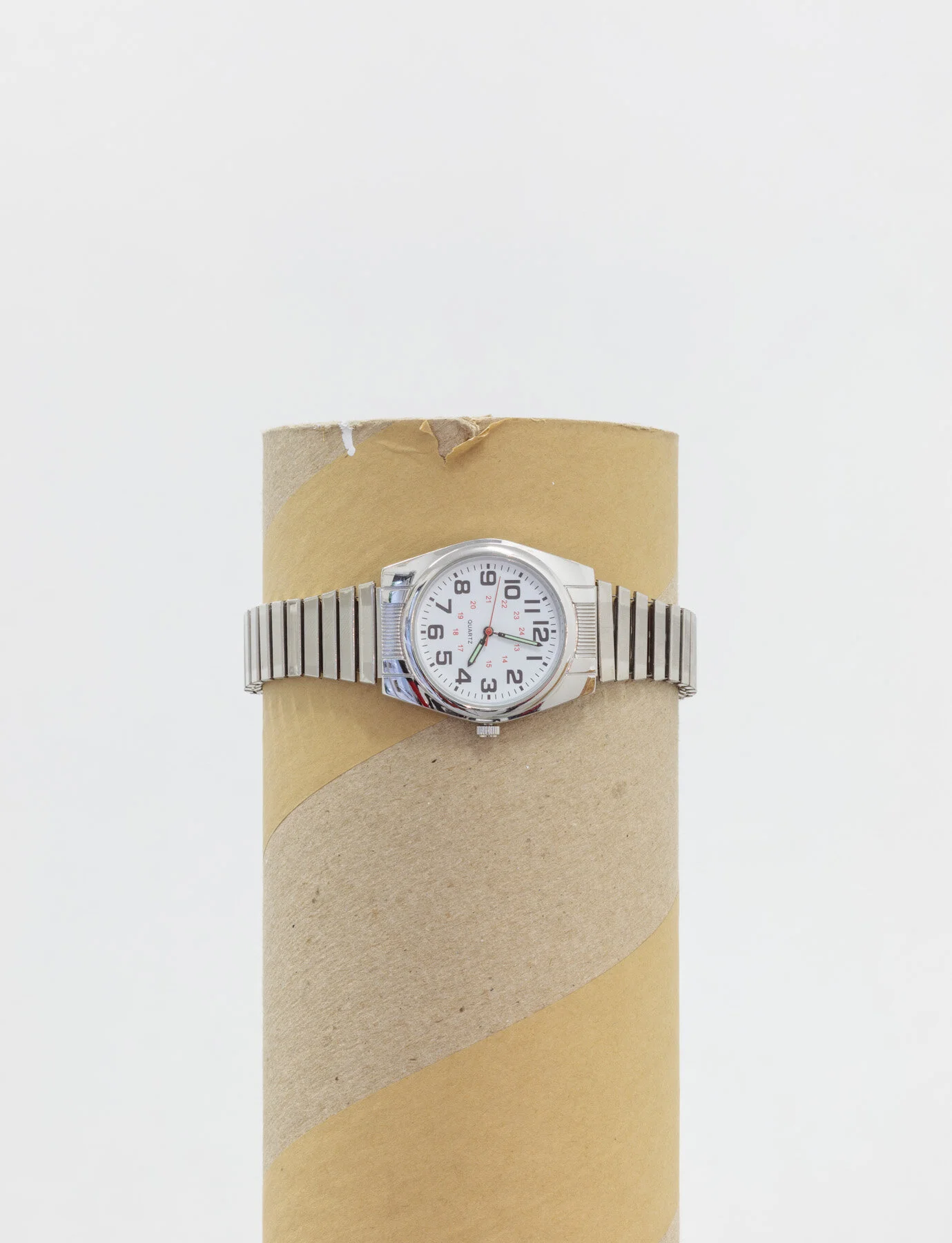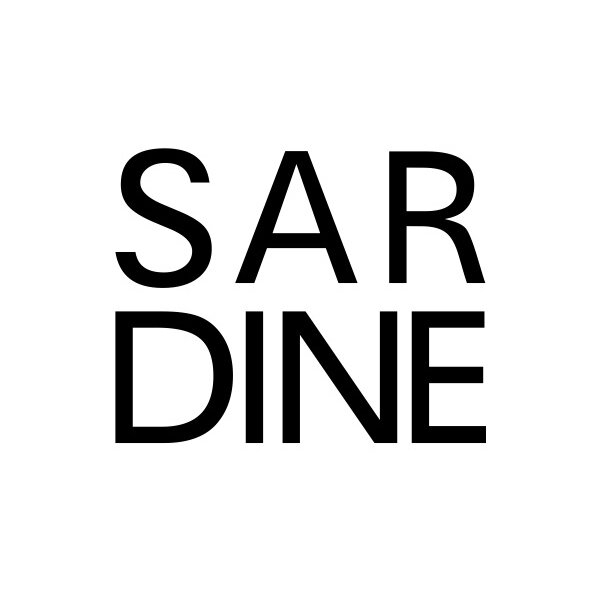Buster Keaton
Text by the Artist Trevor Reese
June 9 – July 8, 2018
“The forces that stand between a man and love, happiness, and success are tremendous and well organized.”-Edward McPherson, Buster Keaton: tempest in a flat hat
The show’s title, Buster Keaton, is in reference to the seminal early director/writer/actor of silent movies in America, though from the physical evidence presented in the gallery there is no explicit reference to the famous filmmaker. The construct of Buster Keaton’s film characters instead becomes a stand-in for the setup of the show. With little more than the title referencing Keaton directly, it is apparent that the filmmaker is just another component and overarching metaphor.
Everything appears mutable, as a number of smaller interventions slowly reveal themselves. The gallery’s website address is altered to include the actor’s initials. – www.sardinebk.com. The postcard image is simply the filmmaker’s name on white with the well-known squiggly green underline of Microsoft Word implying that the program suggests a change. And before continuing inside the space, it should be noted that a well-worn pair of men’s shoes sits patiently outside on the sidewalk next to the door of the exhibition space.
Buster Keaton the actor blends, more often than not, with the portrayal of the onscreen character. So, to mention the person is, essentially, to reference all these characters as well. Most films have Keaton portraying, for the most part, an unremarkable everyman who constantly endures imaginative misfortunes all the while somehow holding that trademark “stone face.” The gravity- and physics-defying Keaton bounces, jumps, runs or simply sidesteps the calamities throughout the films. Cars wreck, boats sink, houses fall, windows smash, and Keaton is always at the center of the disasters, unscathed. These characters are constantly at the mercy of the universe as the film’s love interest is pursued or tough bully avoided. Yet through it all, Buster barely concedes enough time for more than a simple shrug of the shoulders at the imaginative scenarios of unending troubles.
Viewed within this loose framework of Buster’s characters, the sculptural arrangements achingly evoke certain amounts of empathy. Can physical objects, when displayed in such a manner and certain combinations, allude to a sense of hopeful effort and even pathos? So, to inspect some of the objects inside, some crafted, some brand-new, some sourced from thrift stores, all presented in a vertical orientation. And, in the case of a few items, there is no obvious idea of how they came to be here on display. For instance, one configuration features a sealed and sterile mechanical Aortic Valve blithely sitting atop a ubiquitous Ikea bookshelf. The valve—once destined as a replacement in a human heart— retains the tape marked ‘sterile’ across its lid, proof it has not been touched since leaving the manufacturer. He states that this replacement Aortic Valve is here because a surgical assistant removed it from its larger container before officially requested by the doctor. This multi-thousand dollar mistake in effect makes the medical equipment essentially worthless. Nearby, a temporary pacemaker lead for a heart is draped across a stand for sheet music.
Within the group is an upside-down human leg with foot and nearby a houseplant, also upside down. The two sculptures—both with apparent handmade qualities of paint and plaster—give the impression of hastily produced props, perhaps intended for a low-budget movie. A 2x4 piece of lumber measuring six feet and one inch tall balances vertically with the unclaimed dry-cleaned shirt of a man named “Carl Davis” atop it. A neighboring little bedside table clock ticks unaware it keeps the incorrect time and cannot be changed on account of being set in a pillar of concrete. Maybe its time is correct somewhere, at some point.
The objects presented also appear somewhat precarious, a balance between poise and misfortune: a column of unopened juice cans, upside down crutches, a fluorescent light operating vertically in a block of fresh clay. The proximity in which they sit hint at disaster yet the intentional grid layout of the exhibition seems like an attempt to categorize and control what appears to be a variety of mostly dissimilar items. It should also be noted that many of the works deal with ideas of presentation, such as the way pedestals function. From this view there are some more obvious examples, such as a television remote placed atop an upended box. Other combinations become clearer within this context, such as an amateur telescope displaying what appears to be a rock (though it is actually a man-made byproduct of iron casting).
What also appears important is not only the variety of materials but the inconsistent shifting of how materials are portrayed. For instance, in the exhibition there is: a real cactus, an upended plant constructed of plaster cloth, and leaves from a fake plant attached to a floor lamp. When questioned about the use of simulation and simulacrum he mumbles something about the mind/body problem and the stomach/digestion problem. Which leads one to believe that the objects are less about philosophical terms and more about experiencing the multiple and sometimes contradicting layers in they're initially perplexing arrangements.
The aforementioned shoes left outside seem to be a poignant metaphor of someone who has left or just arrived. In the event the shoes are taken they are simply replaced with another nondescript pair. Who would want worn shoes? Perhaps someone that needs them. Perhaps they are placeholders for a person.
Some of the items: self-help videos, crutches, television remote control, telescope with the ability to see the universe, a bookshelf to organize, have an inherent supportive function. The creation of these items suggests we all need a little assistance every now and then, such as an extension of our abilities or aid in deficiency. This idea is evident from the small gesture of available shoes to larger much more complex examples such as a heart valve. Comforting to think that people help others through objects.
And in taking a cue from Buster Keaton’s characters, after flattened and beset by innumerable personal setbacks during the day it seems best to quickly stand up, wipe off the dust, shrug and keep going. Some, in this collection of items on display, stand ready and desiring to assist in daily life (big or small) but somehow not fully capable. Others in the group are just trying to hold together in their own existence. Lastly the exhibition includes a perplexing piece of writing. A stack of this printed text is available on a cheaply built pedestal within the show. In fact, you are already reading it. The writing attempts, valiantly yet utter incapable of capturing many of the thoughts and ideas about the exhibition. And if this writing feels a bit too self-referential and hackneyed, he would agree.
But I’m trying.










